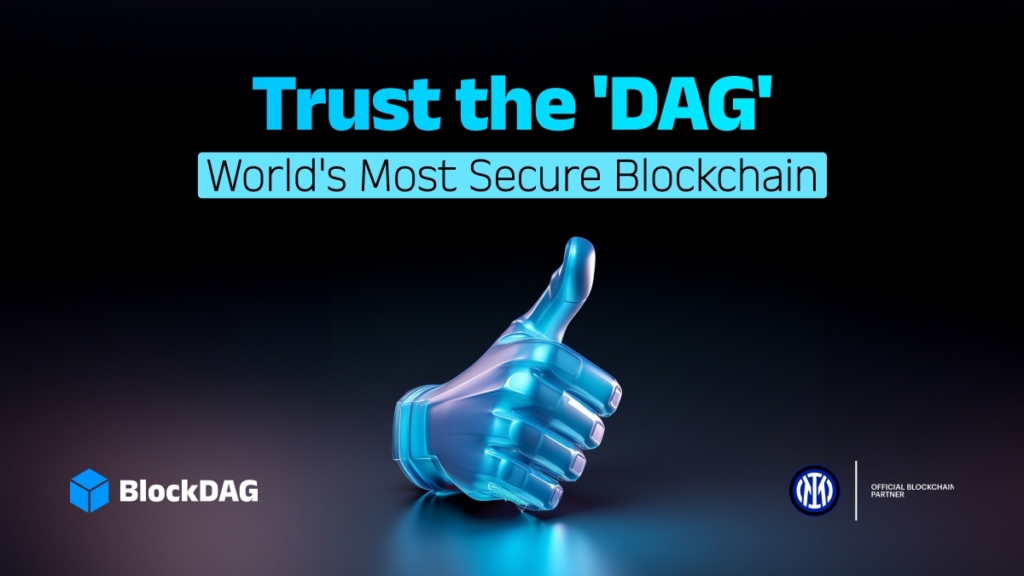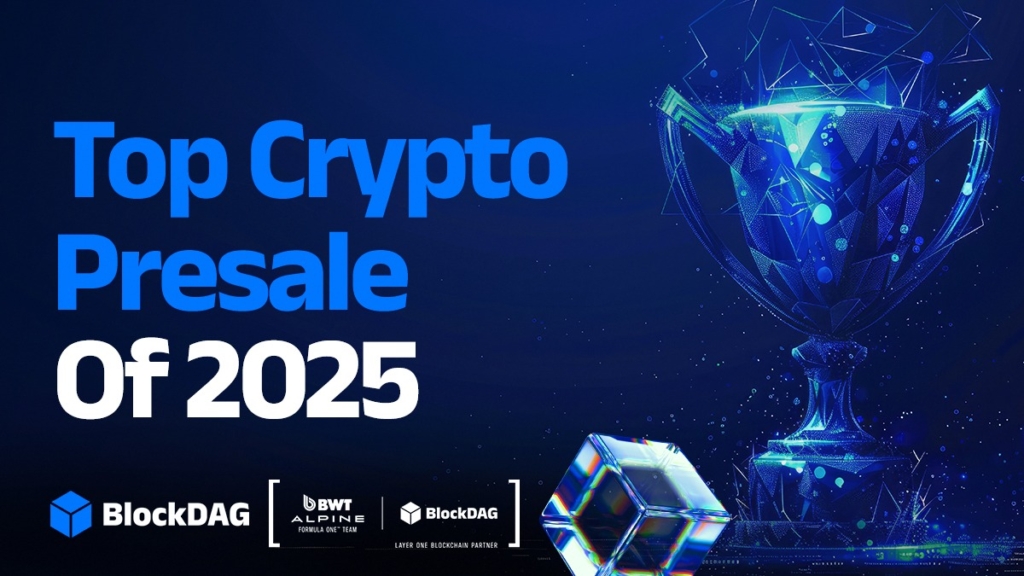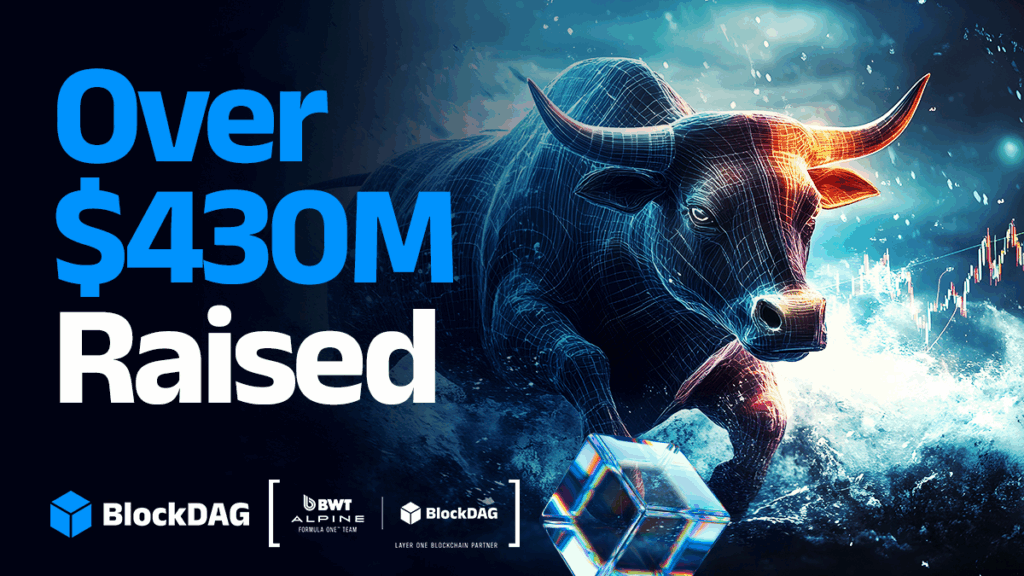BlockDAG is entering the crypto spotlight not just for its massive $360 million presale raise, but for the technology at its core — a hybrid Directed Acyclic Graph (DAG) + Proof-of-Work (PoW) architecture that aims to solve the long-standing blockchain trilemma of speed, security, and decentralization. In a space crowded with Proof-of-Stake chains chasing high throughput at the expense of resilience, BlockDAG’s decision to pair DAG scalability with the security of PoW marks a bold divergence — one that could position it as a disruptor in the Layer 1 market.
As the GLOBAL LAUNCH release approaches on August 11, this architecture is gaining attention from developers, miners, and investors alike, particularly those who see the next-generation Layer 1 race not just as a battle for speed, but for infrastructure that can scale securely under real-world usage. The question now is whether BlockDAG’s hybrid model — already delivering up to 10 blocks per second in testing — could not only compete with major players like Solana and Avalanche but potentially outperform them in the next cycle.
DAG for Speed, PoW for Trust
At the heart of BlockDAG’s design is a graph-based data structure, unlike traditional blockchains that process transactions in sequential blocks. DAG allows asynchronous transaction confirmation, meaning multiple transactions can be validated in parallel rather than waiting for the next block. This unlocks massive throughput potential, with BlockDAG supporting between 2,000 and 15,000 transactions per second (TPS) — a stark contrast to Bitcoin’s 7 TPS and Ethereum’s 30 TPS (without rollups).
However, where most DAG-based platforms rely on alternative consensus mechanisms or Proof-of-Stake to validate transactions, BlockDAG maintains Proof-of-Work — a choice often associated with Bitcoin’s unmatched network security. By combining PoW with DAG, BlockDAG offers fast, scalable processing while ensuring decentralized, trustless validation that resists Sybil attacks and validator centralization.
This hybrid approach is rare and has drawn comparisons to Kaspa’s DAG + PoW model, but BlockDAG adds an important distinction — EVM compatibility. This allows developers to deploy Ethereum smart contracts on BlockDAG without rewriting code, bringing speed, scalability, and security into the Ethereum ecosystem — something neither Solana nor Kaspa can currently offer at this scale.
Real-World Infrastructure in Place
BlockDAG’s technical vision is matched by real-world execution. The network is already supported by:
- Over 18,000 ASIC miners sold, establishing a secure, distributed mining base ahead of mainnet.
- A live testnet, with over 4,500 developers building 300+ dApps across DeFi, gaming, and Web3 tools.
- A viral X1 mobile miner app onboarding 2.5 million users and introducing them to mining via mobile simulation.
- A Demo Trading Platform, offering real BDAG buys at $0.0016 and demo-mode selling to prepare users for live trading.
This infrastructure isn’t future tense — it’s operational. With a confirmed $0.05 listing price and upcoming launch on 20+ exchanges, BlockDAG isn’t just aiming to scale; it’s showing what scaling looks like before listing, with tools, users, and security mechanisms already deployed.
Why Investors Are Watching $1 BDAG
BlockDAG’s DAG + PoW model isn’t just about technical superiority; it’s about price potential. Currently, BDAG is available at $0.0016 in presale. With a confirmed exchange listing price of $0.05, early buyers are looking at 3025% ROI from the outset. But some price forecasts suggest $1 BDAG within 12–18 months if user adoption continues and the tech delivers under mainnet conditions.
A move to $1 represents a 625x return from today’s price — not an easy feat, but within reach for a Layer 1 project with unique technology, high-speed performance, and early user traction. The $600 million presale goal provides capital to fund liquidity, dApp grants, and global adoption, all of which support long-term valuation.
A Network Designed for Builders and Users
BlockDAG’s architecture supports mass adoption without forcing users or developers to choose between speed and decentralization. Its EVM support lowers the barrier to entry, while PoW provides the security backbone that many newer Layer 1s lack.
For users, tools like the Cold Wallet (launching soon) and the Demo Trading Dashboard offer seamless entry into the ecosystem. For miners, the network offers real rewards via ASICs and an active hashrate network. For developers, scalable infrastructure means dApps can grow without hitting network congestion or cost barriers.
As the August 11 GLOBAL LAUNCH release nears, BlockDAG’s hybrid model will move from presale hype to mainnet reality. If the architecture delivers as expected, it could attract users and builders looking for a stable, scalable, and secure Layer 1 platform — and that could propel BDAG from $0.0016 to one of the next breakout tokens of the cycle.
Presale: https://purchase.blockdag.network
Website: https://blockdag.network
Telegram: https://t.me/blockDAGnetworkOfficial
Discord: https://discord.gg/Q7BxghMVyu
Disclaimer: Any information written in this press release does not constitute investment advice. Optimisus does not, and will not endorse any information about any company or individual on this page. Readers are encouraged to do their own research and base any actions on their own findings, not on any content written in this press release. Optimisus is and will not be responsible for any damage or loss caused directly or indirectly by the use of any content, product, or service mentioned in this press release.



